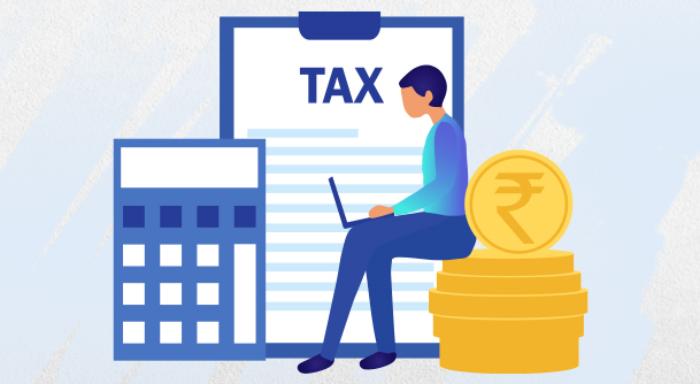Maximizing Your Wealth with the Power of ULIP Investments
Blog Title
2820 |
A ULIP, or Unit Linked Insurance Plan, offers a two-pronged benefit for you and your loved ones. On the one hand, it empowers you to invest your money in market-linked instruments to fulfil your long-term aspirations, while on the other, it provides life insurance as a robust financial cushion for your family in case of any unforeseen contingencies. The premium you pay towards a ULIP is invested in a market-linked fund (equity, debt or balanced) of your choice (after the deduction of applicable charges). Depending on your risk appetite and objectives, you can opt to invest in either equity, debt or a combination of both. With ULIPs, you can secure your financial future and achieve your dreams with ease.
ULIP plans are some of the best options for any portfolio, considering their plethora of benefits. But to make sure you maximise your returns, yYou should ideally hold on to your ULIP investments for at least 5-10 years to accumulate a sizeable corpus. Now, you should understand two aspects before you invest in a ULIP:
- How does this sizeable corpus get accumulated?
- What can you do with the funds that you have accumulated?
It is something worth considering when you invest in ULIPs for pure wealth creation, as prudent use of funds is a financial habit worth having. In this article, we’ll discuss how ULIPs generate good returns in the long term and what you can do with your corpus. Finally, we will look at some of the unique investor-friendly features of ULIPs which make them one of the best investment plans in the market.
Do You Benefit From Compounding In Unit-Linked Insurance Plans?
The premium you pay towards a ULIP is invested in a market-linked fund (equity, debt or balanced) of your choice after the deduction of applicable charges. Depending on your risk appetite and objectives, you can opt to invest in either equity, debt or a combination of both.
A ULIP policy does give you the benefits of what we call the power of compounding. The power of compounding lies in its ability to boost your wealth exponentially. By reinvesting both the initial principal and the profits earned, you create a powerful snowball effect that accelerates your earnings over time. Essentially, compounding is the gift that keeps on giving, allowing you to reap greater rewards with each passing moment.
In case of ULIPs, since you cannot withdraw funds before the lock-in period of five years, the money will keep compounding. It will only continue if you keep investing after the lock-in period. Here’s how compounding may work for you-
- Suppose you invested Rs. 1 lakh per year for a total period of 10 years, and the average return was 8% per annum, withdrawing after 10 years. This will fetch you approximately Rs. 15.65 lakh.
- Suppose you keep this investment untouched for another five years. This will fetch you Rs. 23 lakh at the same rate.
So this is how compounding helps you grow your money swiftly, provided you invest in a disciplined manner.
What should you use the funds for?
A better phrasing for this question would be, what can a ULIP corpus enable you to do? Let us take the example of Rohan and Neha.
Rohan and Neha Singh got married 6 years ago. They are now parents to a 4-year-old child and are seriously considering improving their investment habits to secure their child's future.
They are exploring the possibility of fulfilling all their long-term financial goals with a single ULIP investment plan.
After much thought, Rohan and Neha agreed on the following long-term financial goals that they considered vital and unavoidable:
Goal |
Year to Goal |
|---|---|
DownpaymentDown payment for Home Purchase |
5 |
New car Down payment |
10 |
Child's higher education |
15 |
Child's marriage |
20 |
Second Property |
30 |
Retirement |
30 |
As they have to fulfill these goals at different intervals of almost every five years, they need to plan accordingly.
However, they need to keep in mind the limitations of a ULIP plan:
- They must choose a life cover at the outset.
- The investment will stay tax-exempt only if their premium investment is less than 10% of the life cover.
For example, if they choose a life cover of Rs. 40 lakh, they can invest a maximum of Rs. 4 lakh a year to keep the investment entirely tax-free at maturity.
As the Singhs have a long investment horizon of 30 years, they should choose a higher life cover. This will allow them to invest more money if they need to later on, as their income and savings increase. But how much do they need to invest?
Although the Singhs plan to invest for a long time, their financial advisor has recommended being conservative in their estimates. She recommended using an 8% p.a. rate of return on their investments and seeing how many goals they can achieve.
The couple can invest up to Rs. 50,000 a month towards these goals, including the retirement goal. This way, they can comfortably create a corpus which can support them through all their life goals. In 30 years, against a total investment of Rs. 1.8 Cr, they stand to accumulate around 7.5 Cr (at 8% returns, compounded annually). Even if they keep withdrawing some money to fulfil their life goals, they will still have enough money at the time of their retirement.
This example shows how compounding can scale up your returns massively by just staying invested for a few more years. You can use this as a strategy to build even more wealth for the long haul while withdrawing some amount to fulfil your goals. At the same time, there are several accompanying benefits offered by ULIPs that will keep you going.
Advantages of investing in ULIP plans
Investing in ULIPs will always be a fulfilling proposition for the following reasons:
- Loyalty Additions- ULIPs offer bonuses for staying invested in the policy for longer durations. Insurers offer these rewards to those continuing their policies with extra units added to funds after specific durations (every 5th year in usual cases) until the time of the premium payment tenure. The additions are calculated on the fund’s average value for the previous 60 months. A percentage of the fund value is then added to the fund as a loyalty bonus. It is usually 0.25-0.5% of the fund’s average value.
- Wealth Booster Options- Many ULIPs offer options for scaling up the fund value through the inclusion of extra units minus any charges. These are usually added ten years after the beginning of the policy. After year 10, these are added after every 5th year. The wealth booster may hover between 0.5% and 5.5%, based on the average fund value for the previous 60 months.
- Reasonable Mortality Charges- Mortality charges are what you pay for insurance coverage within ULIPs. They are subtracted from the value of the fund and go up with age. Hence, continuing with your investment will automatically mean a lower mortality charge, while exiting and purchasing a new policy will equate to a higher charge.
- Optimizing Fund Value And Minimizing Risks- ULIP investments enable you to minimize risks in the long term, absorbing short-term fluctuations and market movements. The best part is that you can make use of a fund-switching feature to periodically re-allocate your investments across fund types, depending on market movements and changing life goals. It helps you lower risks and ensures the best possible returns from your investment.
- Tax Benefits- Premiums paid for ULIPs will be tax-deductible up to Rs. 1,50,000 under Section 80C. You will continue enjoying this deduction as long as you keep your investment activities. ULIPs purchased before 1st February 2021 will have their maturity proceeds exempted from taxes under Section 10 (10D). After 1st February 2021, they will only be exempted if the total premium is up to Rs. 2.5 lakh. Death benefits are fully exempted from taxation under this section.
- Possible Waivers On Charges- ULIP charges like fund management, administration, mortality, and surrender charges add to the investment cost. However, for those staying invested for the long haul, insurance companies may sometimes offer waivers on the same, thereby boosting your overall returns significantly.
Hence, the above-mentioned advantages do make a strong case for staying invested in ULIPs over the long haul. If you have already built a sizeable corpus, you may choose to continue your investment for some more years to maximize your returns through compounding or invest in achieving any specific objective that you have in mind.
Aastha Mestry - Portfolio Manager
An Author and a Full-Time Portfolio Manager, Aastha has 6 years of experience working in the Insurance Industry with businesses globally. With a profound interest in traveling, Aastha also loves to blog in her free time.











